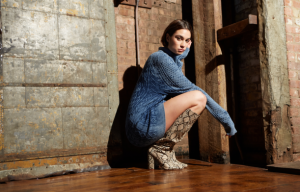
Webinar: Seed of Joy denim capsule collection
In conversation with Carved in Blue, Lucia Rosin, founder at Meidea, discusses making indigo knitwear sustainably and indigo knits as an extension of denim.
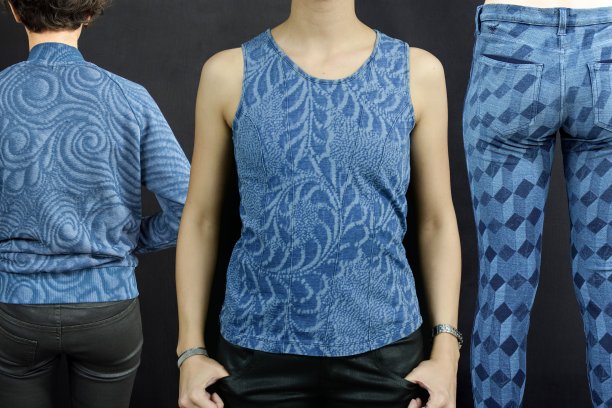
11th November 2020
Knitting Industry
|
Lenzing, Austria
Indigo is most often associated with denim, but the dye has applications beyond jeans. Lucia Rosin, founder and head of design at consulting company Meidea, has long had a passion for knitwear in the rich blue hue. And the pandemic could grow indigo’s uses in lighter weight fabrics that allow consumers to be comfortable.
In a conversation with Carved in Blue, Lucia discusses how to make indigo knitwear sustainably, the creative potential in indigo finishing and why indigo knits are an extension of denim.
Carved in Blue: When did you start working with indigo knitwear?
Lucia: My passion for indigo knitwear began many years ago during my first trips to Japan in the 1990s. Many Japanese brands use indigo jersey for T-shirts, working with prints, embroidery and tie-dye. I really like how they play with indigo, a universal language for denim lovers. I thought that I would like to make this wonderful product more reproducible on an industrial level, preserving its original aspect and combining it with Italian taste.
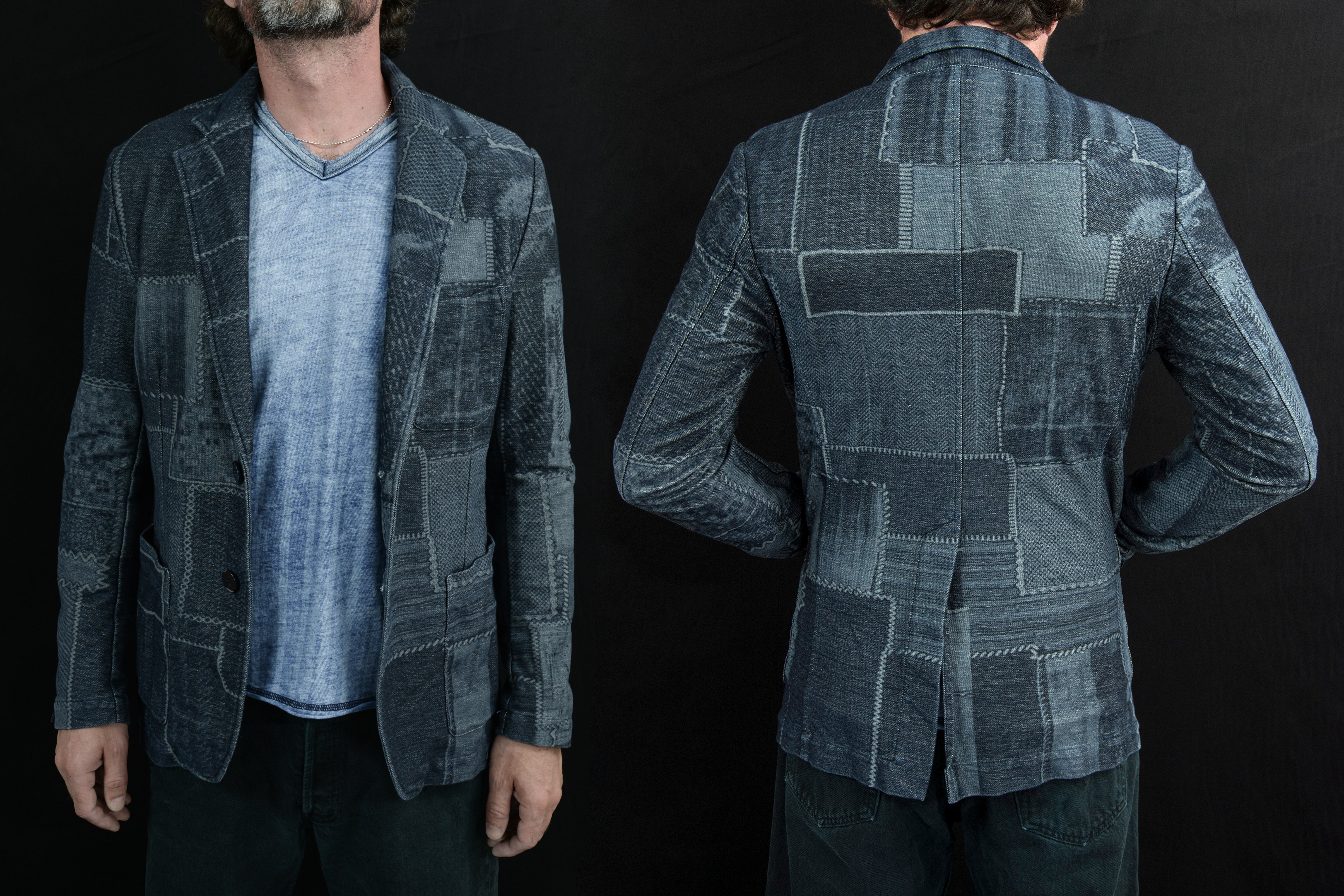
I started investigating indigo circular jersey in the early 2000s, with a knitwear expert and a local denim mill, researching how to make fabrics more homogeneous in appearance, using more fine and refined yarns and the type of washing and treatments needed. It was pioneering, exciting and very experimental work.
Carved in Blue: Why is now an important time for indigo knit? What is resonating with today’s consumer?
Lucia: The vision for our future, in a world that has rapidly transformed, is to live in a more ethical, healthy and intelligent way. And this is how indigo knitwear, driven by post-pandemic demands, meets technology, pursuing a concept of total well-being.
Innovation, in the textile and fashion fields, allows products to adapt to emerging needs such as commuting, comfort, freshness, hygiene, functionality—all of this using natural fibres. Nowadays, the final consumer is not only looking for the purchase of a product, but also something more important, trying to live well, both at home and in lifestyle. Indigo knitwear is well suited to all these requests: versatile, technical, easy to wear, pleasant for home wear and sustainable.
Indigo is a living dye, with no season or gender; wearing a garment its color will dynamically change during use, reflecting the personality of the wearer, through his way of life
Carved in Blue: Technology continues to evolve. Can knits be damaged with laundry processing? What is the best way to finish?
Lucia: The laundry plays a primary role in the full success of an indigo knitwear project. We have worked mainly using technology, in collaboration with laundries and machinery companies, to pursue a sustainable production line with low environmental impact, for the purity and saving of water, energy and industrial waste.
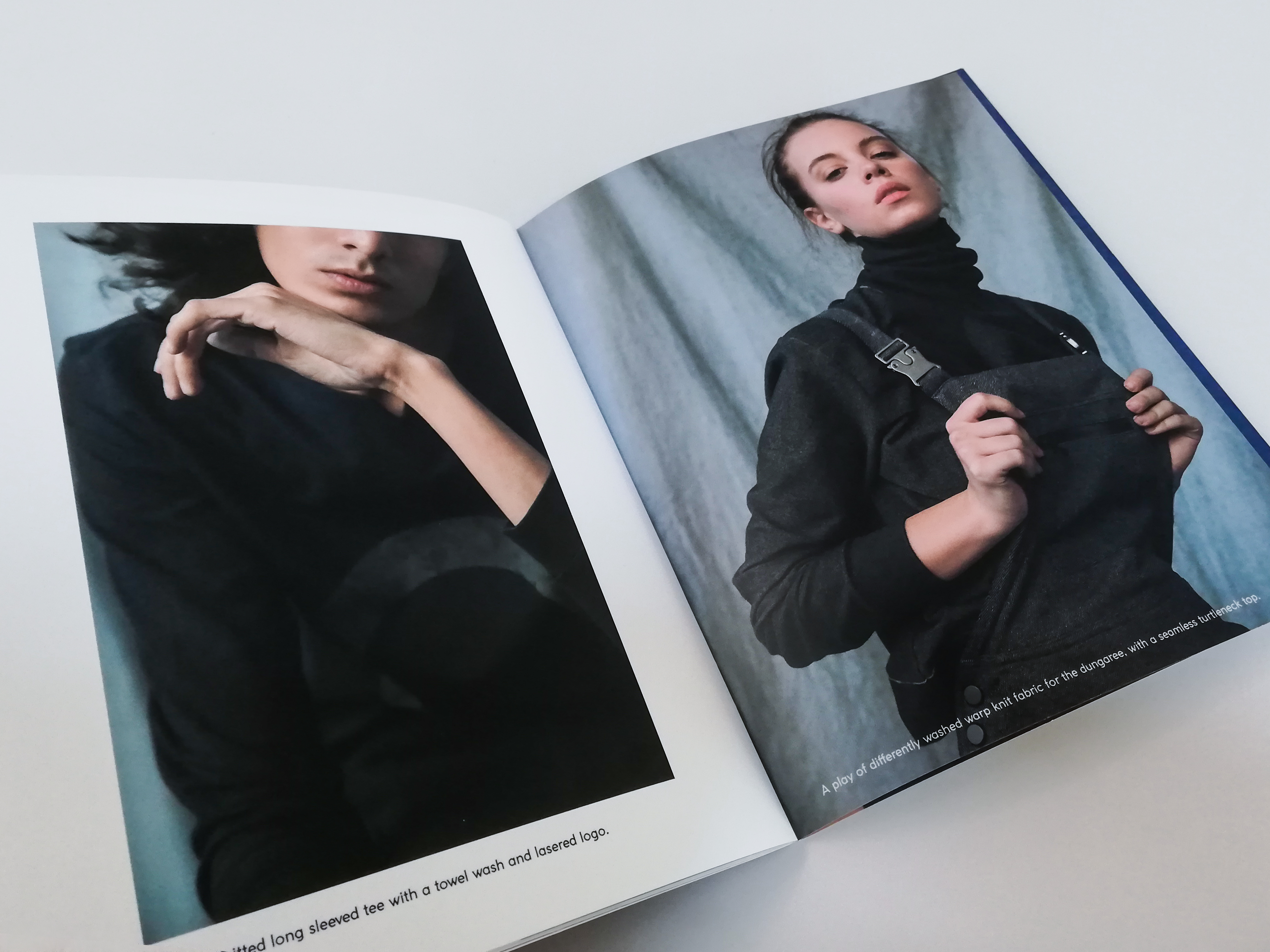
Indigo is a living dye, with no season or gender; wearing a garment its color will dynamically change during use, reflecting the personality of the wearer, through his way of life. By combining technologies such as ozone and laser, amazing worn out effects can be achieved, without affecting the fabric and maintaining all the performance in the final garment.
We have expanded the research, amplifying creativity, using the garment as an artist’s canvas and transforming it into a form of expression and a communication tool.
More and more new laundry technologies offer unlimited opportunities, and by combining collaboration with digital design, we have exciting developments and possibilities ahead of us.
Carved in Blue: What benefit does TENCEL Lyocell add to indigo knits?
Lucia: By developing the indigo knit collections, we left the classic interpretation of the indigo knit, both in the style of the garments and in the development of the fabrics, introducing elements that made it suitable for a wider audience.
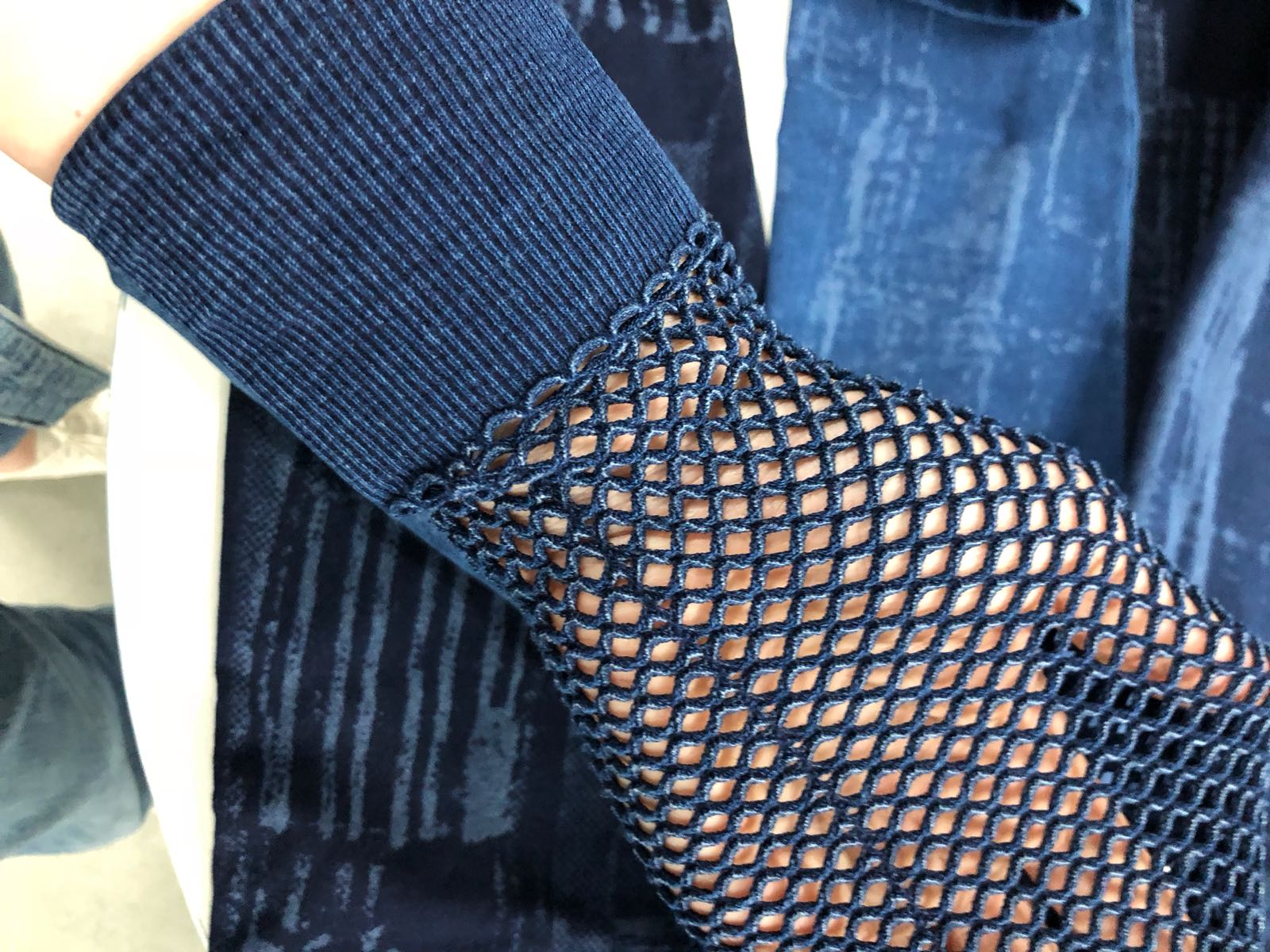
In the search for well-being and in tune with the evolution of lifestyle, TENCEL Lyocell adds fundamental qualities to the product: the refined appearance of the fabric, the extreme comfort, the pleasantness of the touch, the breathability and also the traceability of the supply chain and circularity of natural fiber. All features that, as never before, meet the request of the very attentive and conscious consumer.
Carved in Blue: What do designers need to know about indigo knits when developing programs?
Lucia: The most important thing to know when creating an indigo knit project is what you want to achieve from a garment or collection. Each feature is related to its subsequent development with one or the other knitting technology.
Working in collaboration with technicians is fundamental, understanding the type of machinery of the suppliers, in order to avoid trials that cannot be done and to be able to apply the correct creativity thanks to a good use of the machines.
There are many types of machines and technologies. Here are some of the most popular: We know circular knit, which represents a substantial part in the jersey and sweatshirt indigo. You can create many types of textures, constructions, stripes. The warp knit, which includes different types of knitting methods and variety of construction, is slightly elastic and easier to sew. In seamless, there are different types of technologies for the production of garments. The one well known for its high technical flexibility and dedicated to active sport and modelled on the body, the garments are sculpted almost like a 3D printer. The seamless whole garment allows for thicker yarn counts; uses are multiple and complex construction can be created directly on the garment.
In the seamless processes, there is less waste, less time to produce and therefore greater sustainability that leads to concrete results on the environment.
Along with widely used yarns such as cotton in various counts, with the introduction of yarns such as TENCEL Lyocell, cupro, hemp and recycled ones such as REFIBRA Technology, the performance and aesthetic aspects are expanded and the possibilities for customization multiply.
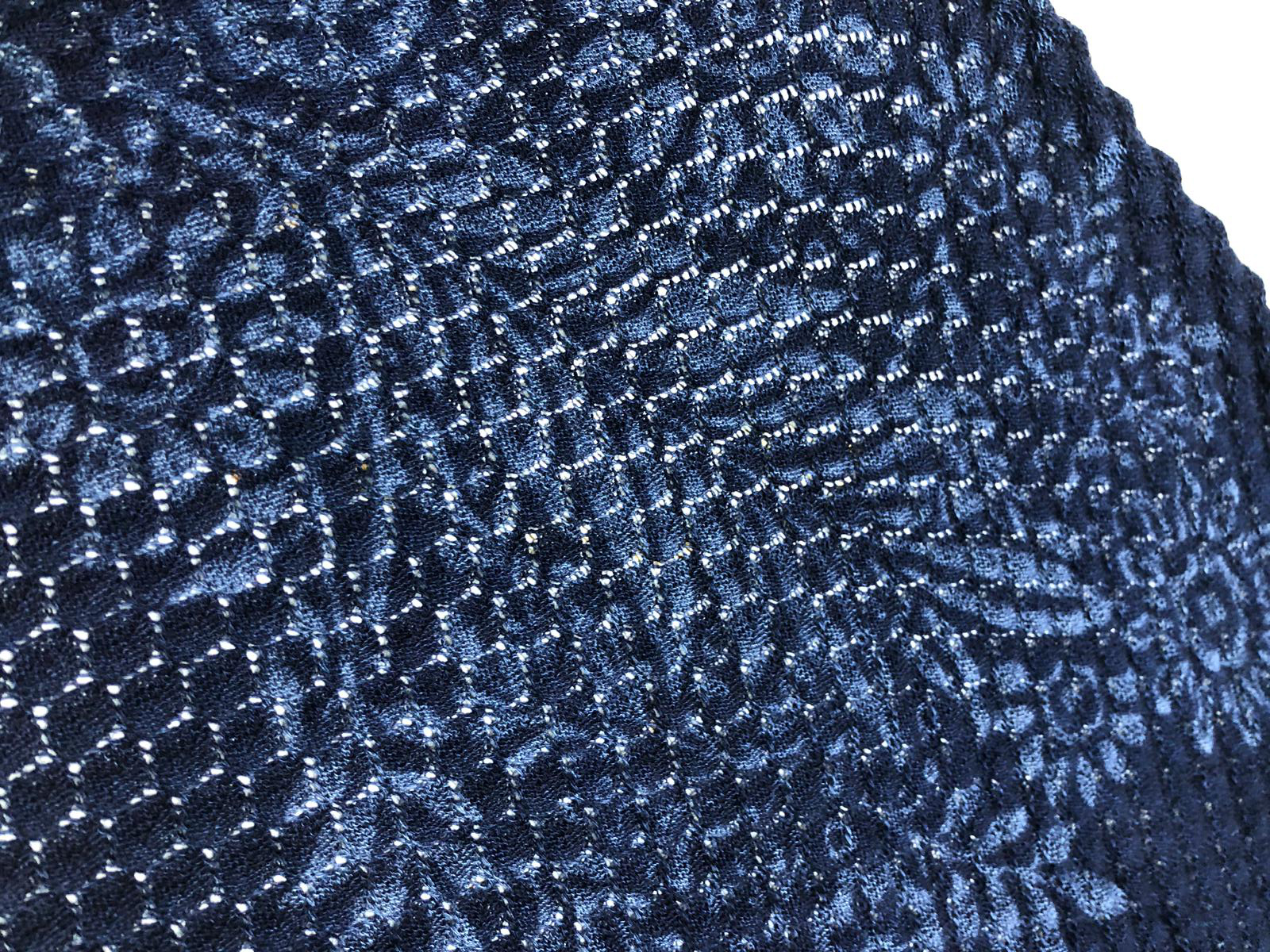
Carved in Blue: How are indigo knits still denim? Is there one definition?
Lucia: We can say that denim is evolving. It is possible, by combining denim and indigo knit fabric, to create total looks that give maximum comfort and flexibility to everyone, no longer divided by age or sex, adapting to diversity and benefiting from all the different anatomies.
We can hybridize forms and materials through several technologies and reach different expressions of the indigo identities. The indigo knit is an expansion of denim, a dimension that can collect and represent further aspects, some still unexplored. I would define the indigo knit as a tool to “amplify function,” while keeping our love for denim intact.
Carved in Blue: What does Carved in Blue mean to you?
Lucia: Sharing of ideas and knowledge. In order to grow our vision, it is necessary to be open minded and listen to other experiences, in life and at work. This platform collects many stories and points of view from all over the world. Denim has found in Carved in Blue a perfect tool to amplify many voices, to convey a message of collaboration and sharing.

Business intelligence for the fibre, textiles and apparel industries: technologies, innovations, markets, investments, trade policy, sourcing, strategy...
Find out more